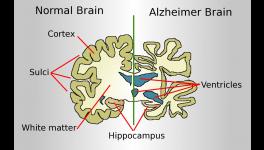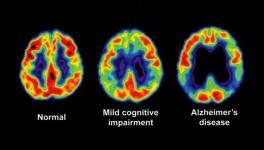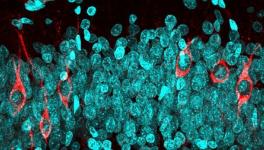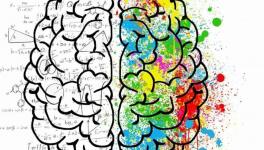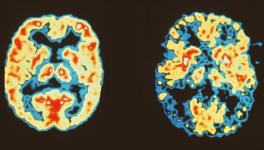How Dementia Spreads Through Brain
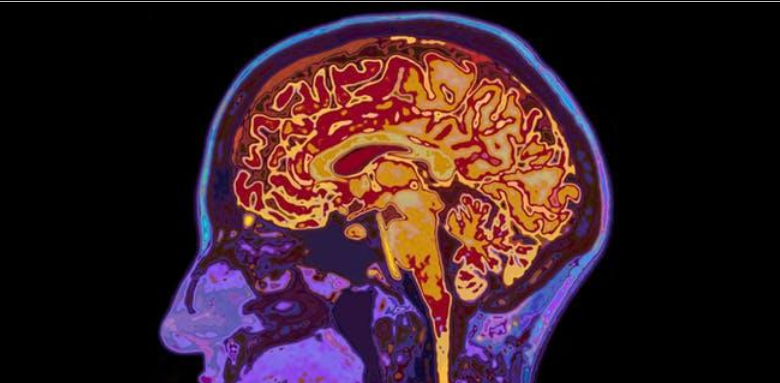
Image Courtesy: The conversation
Dementia is one of those health issues that modern medical science has failed to provide any optimal solution for yet. There are several ongoing researches, which nevertheless, have opened up several clues about how this illness develops in the brain, even though many still remain to be revealed.
One of the most common forms of dementia is the Fronto-Temporal Dementia (FTD). It is the common form of dementia that develops in people below the age of 60. FTD comprises of a group of neurodegenerative conditions that show diverse linguistics and behavioural symptoms. Deciphering how FTD spreads through the brain has been a difficult task, as in the case of Alzheimer’s disease, because of the diversity of symptoms the disease shows. This variability also makes scientists stuck with the search for cures, which necessitate pinning down of the biological driver of brain atrophy. For clinical trials, too, it poses a challenge as to how to evaluate whether a novel treatment is making a difference in the progression of the disease in a patient.
In a new study published in the journal Neuron, scientists have used brain maps to see the connections in it in order to predict how brain atrophy would spread in individual patients suffering from FTD. The study’s findings suggest that dementia spreads through the synaptic connections between established brain networks. The findings add to the growing evidence that dementia spreads through brain connections.
Also read: Long -term Memory Involves Cells Other Than Neurons
“Knowing how dementia spreads opens a window onto the biological mechanisms of the disease – what parts of our cells or neural circuits are most vulnerable. You can't really design a treatment until you know what you're treating," said Jesse Brown, of the UCSF Memory and Ageing Centre and UCSF Weill Institute for Neurosciences and the lead author of the study.
The corresponding author of the study, Willliam Seeley, a professor of neurology and pathology at the Memory and Ageing Centre and Weill Institute, has shown in his previous researches that brain atrophy in many forms of dementia is closely related to well-known brain networks. That is, group of functionally related brain regions that work cooperatively through their synaptic connections, sometimes even over long distances. In other words, these researches propose that instead of spreading evenly through the brain like that of a tumour, the neurodegenerative diseases jump from one part of the brain to another along the circuits that wire theses network together. The new study supports this idea.
For the study the researchers recruited 42 patients having behavioural FTD, a form of FTD that causes the patients to exhibit inappropriate social behaviour and 30 patients having semantic variant primary progressive aphasia (svPPA), another form of FTD that impacts language ability of the patient. The researchers scanned the brains of the patients when they visited the clinic for the first time with the aim of assessing the extent of brain degeneration and then had a follow-up scan a year later to measure the progression of the disease.
The researchers began with the hypothesis that brain atrophy starts at some vulnerable region and then spreads out to anatomically connected regions via the synapses. They scanned brains of the patients to find out where the brain atrophy had begun. To do this, they built standardised maps of some 175 brain regions using FMRI (Functional Magnetic Resonance Imaging) of 75 healthy persons. They then matched these standardised maps with the scans from FTD affected people and found out the hub of the brain atrophy as the likely epicentre of the patient’s degeneration.
Also read: Removal of Toxic Substances From Brain Depends on Quality of Sleep
They used the results from this step to predict in which direction the atrophy spreads and matched their predictions with the brain scans from the FTD affected people taken a year back. They found good matches in their predictions that were based on their hypothesis. The brain atrophy spreads through the brain by synaptic connections between related brain areas. The progression starts from a vulnerable region and eventually affects other parts.
The researchers say that they are not going to implement their method in clinical trials, for that more accuracy of their predictions is needed. If it can be predicted how the begining of atrophy in the brain would spread in the brain, precisely, which brain areas would be affected in future and through which roads, it would surely be beneficial for clinical practices and also therapeutics.
Get the latest reports & analysis with people's perspective on Protests, movements & deep analytical videos, discussions of the current affairs in your Telegram app. Subscribe to NewsClick's Telegram channel & get Real-Time updates on stories, as they get published on our website.









